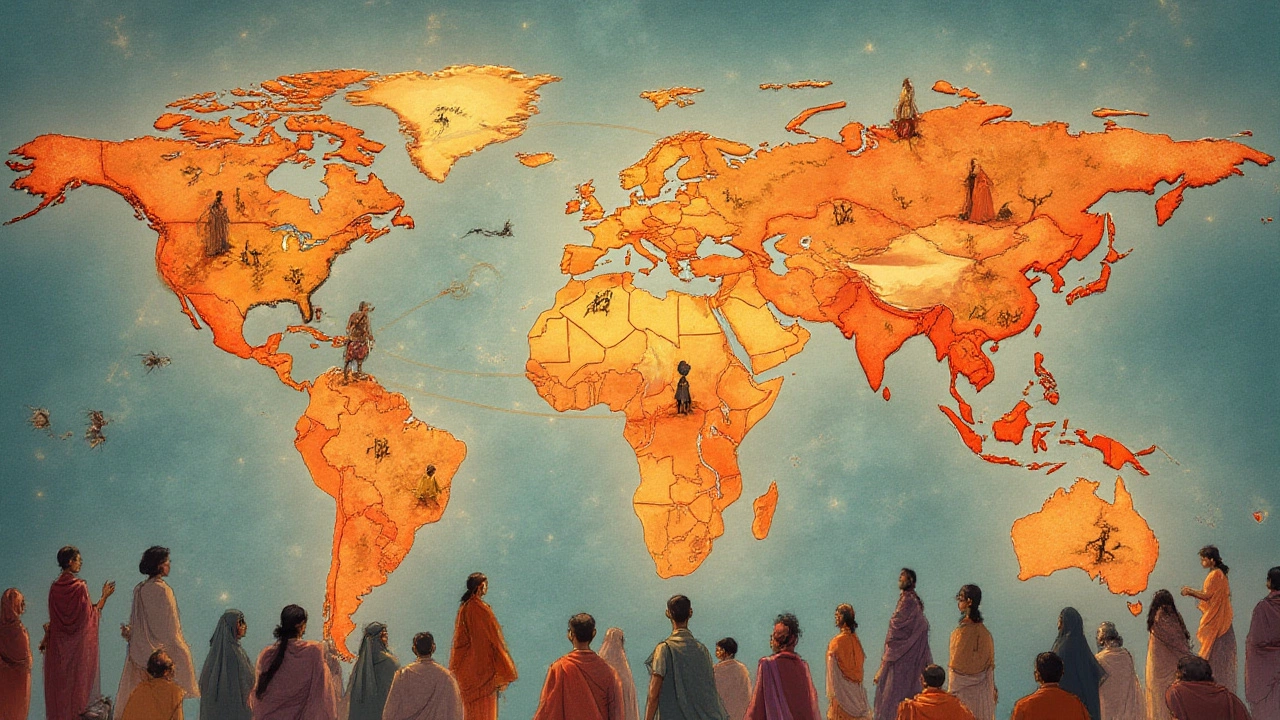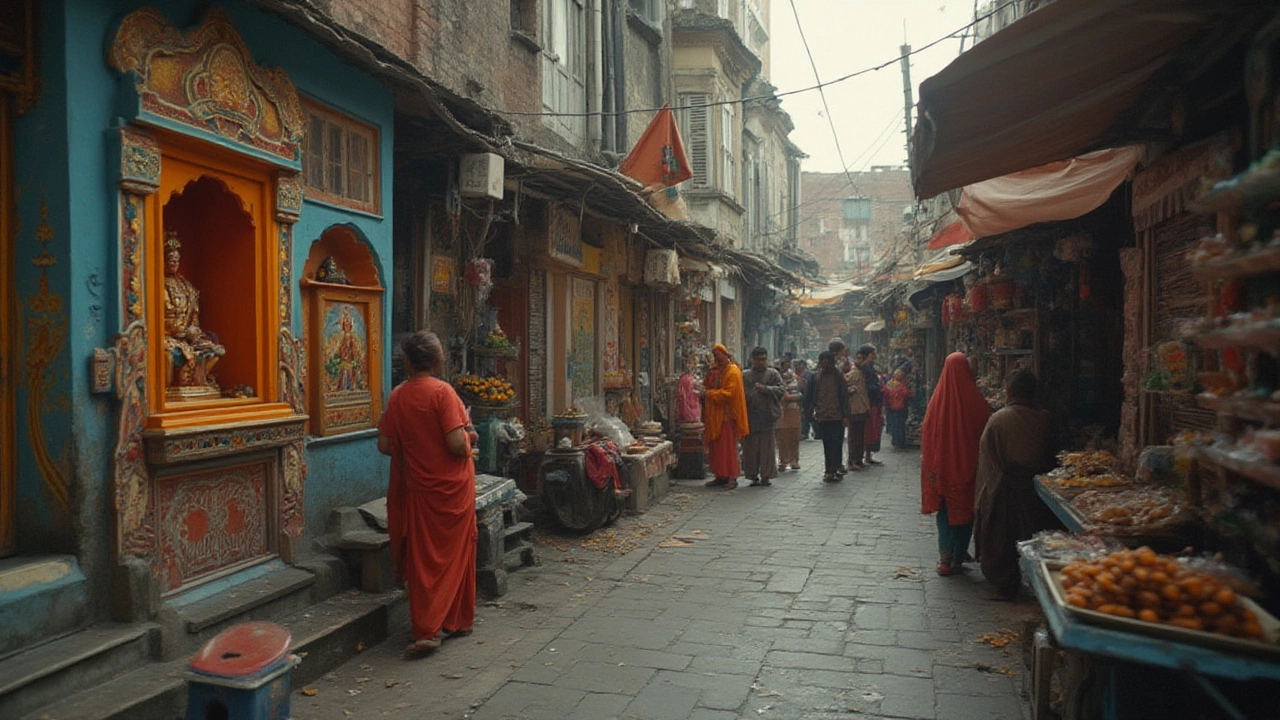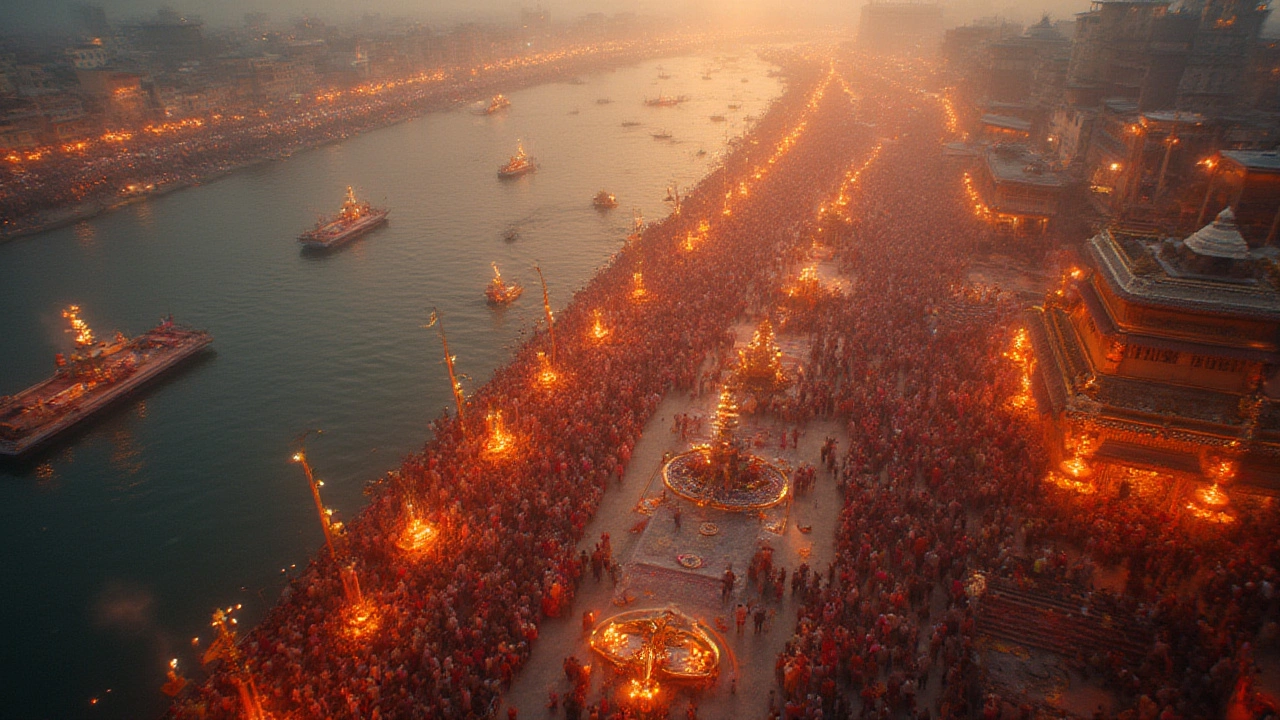Imagine being part of a faith where nearly everyone you meet shares your traditions, beliefs, and festivals. That’s the world for most Hindus—95% of them live in just one country. You might guess India, and you’d be right. This isn’t just a quirky statistic to pull out at a party; it shapes how Hinduism looks, feels, and changes over time. It affects food, language, celebrations, and even the architecture you see walking down the street. The scale of Hinduism in India is nearly impossible to capture unless you experience it. My dog Coco would probably say it's like every third house on our street having a pooja room and everyone sharing sweets during Diwali. But there’s more to the story than just numbers. Let’s get real and take a look inside this massive puzzle.
Why India Is the Heartland of Hinduism
Start with a single fact: out of over 1.2 billion Hindus worldwide, more than 1.1 billion live in India. That’s not a gentle majority—it’s a landslide. Hinduism wasn’t imported into India; it was born there. It’s woven into the stories, rivers, mountains, art, and even the daily bustle in nearly every city and village. India’s constitution officially recognizes Hinduism, but its presence bleeds far beyond laws into festivals, names, rituals, and even the way people greet each other. That ‘namaste’ you hear has roots deep in Hindu practices.
India’s diversity helps Hinduism thrive in so many forms. From the Sanskrit chants in Varanasi to the kolam designs outside Chennai homes, local flavors of worship are everywhere. Some regions celebrate gods and goddesses you’ve never heard of if you’re used to northern India. For example, Andhra Pradesh has its own folk deities like Gangamma; Bengal has Durga Puja that turns cities into seas of sound and color. Meanwhile, up north in Himachal Pradesh, village gods have vibrant festivals that most don’t see on national television.
Unlike some faiths that travel across continents, Hinduism remained rooted because of complex historical, cultural, and social reasons. The arrival of Islam, Christianity, and later, colonial powers, changed many things—but for most Hindus, home stayed home. Hinduism adapted, argued, mutated, but never uprooted completely. Even today, more than eight out of every ten Indians identify as Hindu. You see it in the temples packed on Tuesdays and the rangoli patterns decorating Diwali nights. This is why you could spend a year traveling through India and never see the same style of worship twice.
Hindu Populations Beyond India’s Borders
You might be surprised how far Hinduism has wandered outside India—even if it’s just in smaller pockets. Nepal comes next, with Hinduism as the largest religion and about 80% of Nepalis identifying as Hindus. It’s the only country that once claimed to be a Hindu kingdom. You see the faith in everyday life there, with temples like Pashupatinath becoming iconic pilgrimage points.
Bangladesh and Indonesia (especially on the island of Bali) also have significant Hindu populations. In Bangladesh, millions still keep their Hindu identity despite being a minority. Indonesians on Bali have held on fiercely to their Hindu linked rituals and ceremonies, even as the surrounding islands practice Islam.
Then you have small but old Hindu communities scattered across the world. Trinidad, Guyana, Suriname, Mauritius, and Fiji—places you’d never associate with Indian food or temple bells—have unique, sometimes quirky Hindu festivals. That’s thanks to indentured laborers taken during the British colonial period. These groups built their own temples, handed down stories, and created creole versions of Hindu rituals. My friend from Trinidad told me about how their Diwali looks a lot like a Bollywood movie, with firecrackers and feasting, but the food shifts from the typical samosas to something called aloo pies. In the UK, Canada, and the US, newer migration has created vibrant Hindu communities, making Holi color runs almost as common as Thanksgiving.

How Hinduism Influences Indian Society
Here’s where things get fascinating—the sheer might of numbers means Hindu culture pops up everywhere in India, whether you’re in a big city or a sleepy village. Ever wondered why there are fewer meat shops in some neighborhoods? Hindu dietary rules. Why do cricket games pause in April for a splash of colors? Holi, the Hindu festival of colors, spills into everything, even unofficial holidays. You’ll hear prayers at sunrise, see orange flags fluttering on rooftops, and watch processions clog the street. I had to time my morning dog walks with Coco to avoid mobs during Ganesh Chaturthi, mostly so neither of us would end up covered in pink powder.
Education, food, laws—even the movies—take their cues from Hindu roots. For example, cow veneration isn’t just symbolism; it shapes laws and public behavior across many states. You notice temple calendars pinned in buses, people reciting shlokas on WhatsApp groups, and whole towns shutting down for local Hindu festivals.
Politics can’t ignore these numbers either. Most political parties wind Hindu references through their messages. But it’s also a two-way street: activism from various communities reshapes what Hinduism looks like. For instance, the push for the inclusion of Dalits, the debates over temple entry for women, and the explosion of online religious streaming during the pandemic—all show how this isn’t a static, frozen faith. It’s changing right alongside the country.
Unique Practices, Languages, and Stories
One of the coolest things about Hinduism, especially in a place with 95% of its followers, is the mind-boggling range you see. In Kerala, temples play percussion orchestras called chenda melam, drawing out stories with rhythm. In Rajasthan, devotees walk hundreds of kilometers barefoot for a temple festival. Even Coco gets roped into certain rituals, like chasing after lamps during karthika deepam (not recommended, unless you want a singed tail).
Languages matter, too. Hindu prayers can be in Sanskrit, Tamil, Bengali, Hindi, and dozens more tongues. My neighbor learned mantras in Marathi but switches to English for festivals in her WhatsApp group chats. Family stories blend myth with reality, so kids learn about blue-skinned gods and real-life heroes in the same breath. Movies, TV serials, and even animated shows bring gods like Hanuman and Krishna into everyday conversations.
Cuisine is a big part of it. Many Hindus follow vegetarian diets on certain days, and offerings to gods (prasadam) become community feasts. Every major festival carries signature dishes—laddoos for Ganesh Chaturthi, modaks, kheer, and banana chips for Onam. Sometimes the festival food is the real reason people show up! All this means when you visit a Hindu family, they’ll likely offer food as a sign of respect—and probably won’t take no for an answer.

Curious Numbers: A Quick Look at Hindu Populations
Numbers bring reality to talking points. Here’s a table to make sense of where most Hindus live:
| Country | Est. Hindu Population (2025) | % of Country’s Population |
|---|---|---|
| India | ~1,130,000,000 | ~80% |
| Nepal | 24,600,000 | ~80% |
| Bangladesh | 13,000,000 | ~8% |
| Indonesia | 4,000,000 | ~1.7% |
| Pakistan | 3,990,000 | ~1.85% |
| Sri Lanka | 2,830,000 | ~12.6% |
| United States | 3,400,000 | ~1.0% |
| Mauritius | 640,000 | ~50% |
These numbers are from the Pew Research Center’s 2022 estimates and local census data, as best as anyone can gauge with how fast populations shift. See that bold number next to India? That’s the where do 95% of Hindus live keyword in action. When you visit India, you’re standing at the epicenter of an ancient living faith—with echoes in neighbors, but nowhere louder or more vibrant.
If you’re exploring Hinduism outside India, check out Bali’s temple ceremonies, Nepal’s ghats during Tihar, or Fijian Diwali celebrations. Each spot tells its own story, sometimes spicy with migration, sometimes mellow with nostalgia for a homeland.
